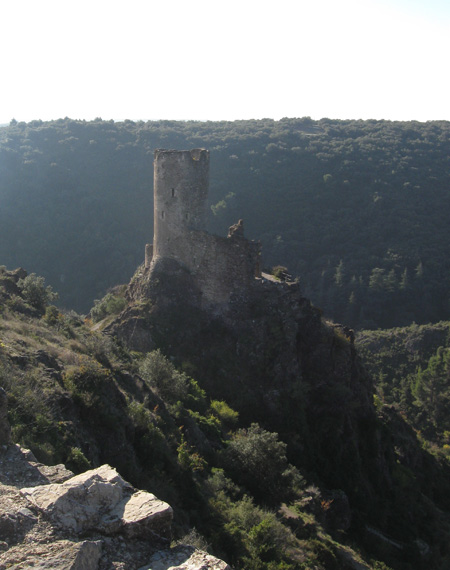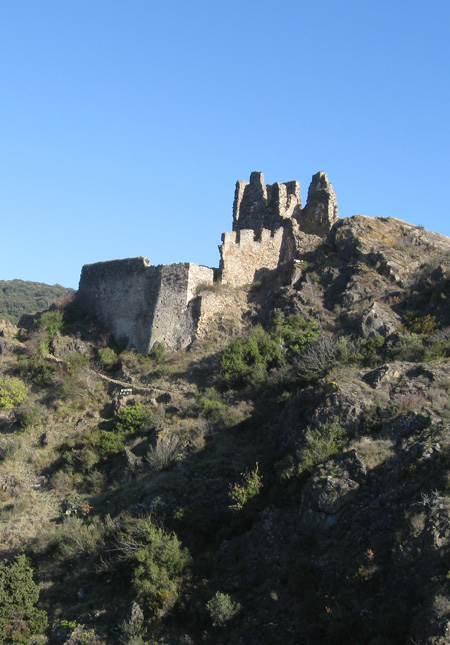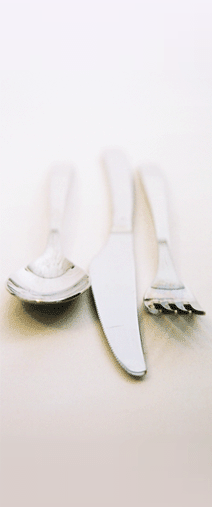

Two Cathar Castles (well actually two post Cathar Castles built on the site of the original Castles) at Lastour.
You cannot really exist in Languedoc without being made constantly aware of The Cathars.
They are without doubt the one of the most important symbols of the area and , surprisingly for a movement that essentially had died out by the end of the thirteenth century, their echo stills lives on to our own age influencing people like Hitler and the awful Dan Browne of the Da Vinci Code fame.
They were basically a Catholic Heresy which believed in a dual set of gods, one good and one evil, which spread through Languedoc like wildfire at the end of the twelfth century and the begining of the thirteenth.
They put the wind up Pope Innocent 2nd so much that he organised a Holy Crusade against them ; The Albigensian Crusade , which descended on them like a ton of bricks and their first gesture, to burn and pillage the city of Beziers, including torching the innocent citizens in the churches , set a tone for the bloody crusade which raged and was waged throughout Languedoc from 1209, when they attacked Beziers, to 1229 when the Peace of Paris was declared.
The Cathars did continue, in a much depleted form for some years after that until they were finally ousted by the Dominican Fathers in the Inquisition.
Much later on their cause was revived by writers like Simone Weil who saw Catharism as a pure force which was a shining example of European pre-Roman civilization being crushed by the (Roman) church. She was much influenced by the Maire of the village of Arques ; Déodat Roché who wrote at length about his chosen people and how he reckoned that their treasure (The Holy Grail ?) had been smuggled out of Montsegur Castle before the last surrender of the Cathars there.
Otto Rhan, a German contempory of Weil, espoused her cause and philosophy and his writings about a pure European civilization are thought to have influenced Herr Hitler.
Dan Browne just confused Déodat Roché’s writings with various other pop histories and wrote a best seller.
Strangely it was only during the 1990’s that Catharism again came into vogue and since then there seem to have been a lot of books written on the subject.
My interest was rekindled by being sent a book on the Albigensian Crusade by a customer (thank you John) written by Johnathan Sumption, and then some further reading of a book on the Cathars by Malcom Barber- both of these are available in paperback.
I suppose that one of the reasons that the Tourist Board of Languedoc have embraced the Cathars recently (the airport in Carcassonne has just had its name changed from Salvaza Airport to L’Airport des Pays Cathares) is that they built their Castles in the most inaccessible romantic and dramatic places (inspired no doubt by the results of being conquered by the members of the Crusade) .
I have previously visited some closer to the Pyrenees but last week I took the excuse of having some friends to stay to visit a group north of Carcassonne which I pictured above .
They are breathtakingly positioned on the rocky tops of peaks in Les Montagnes Noires and well deserve the climb up to see them.
5 comments
